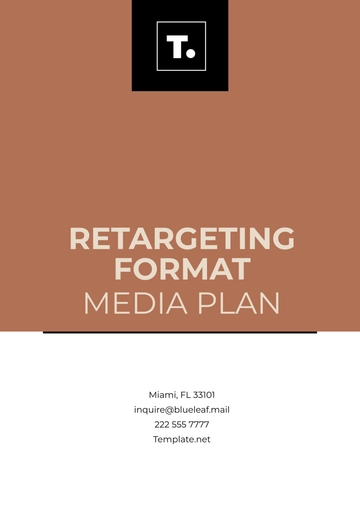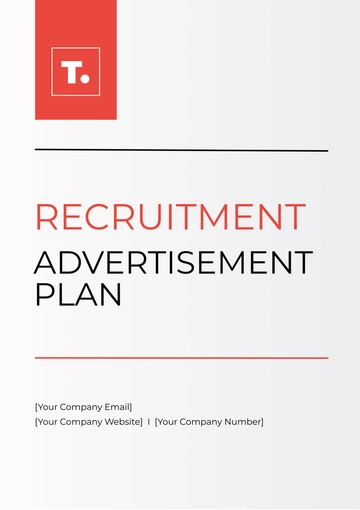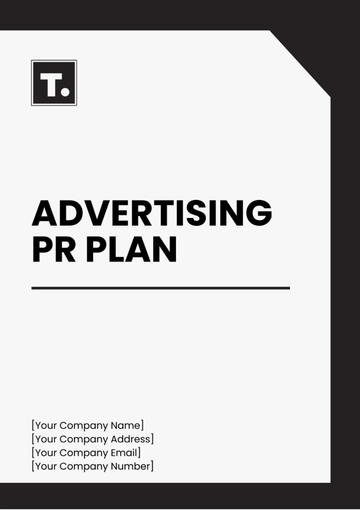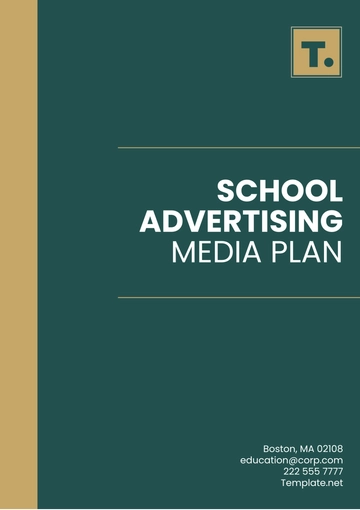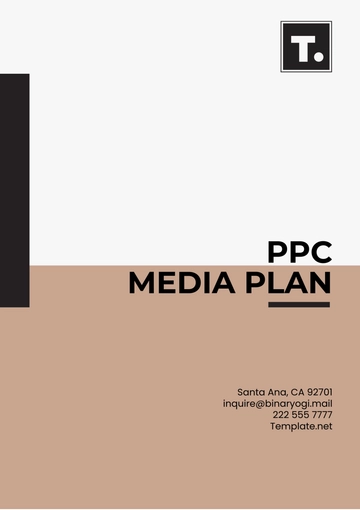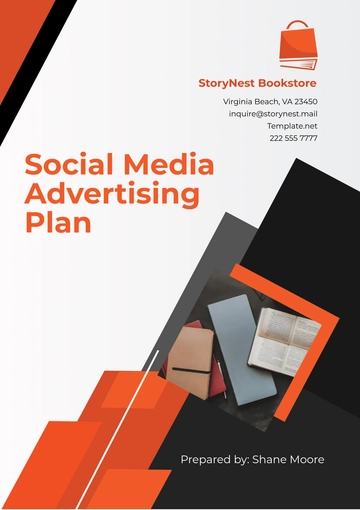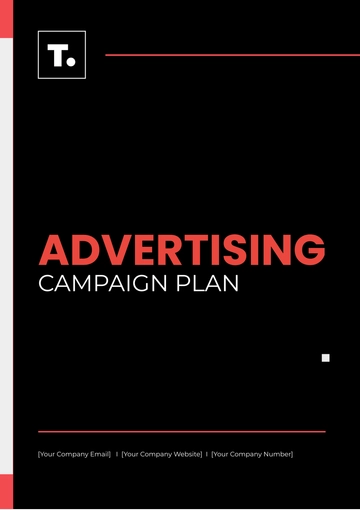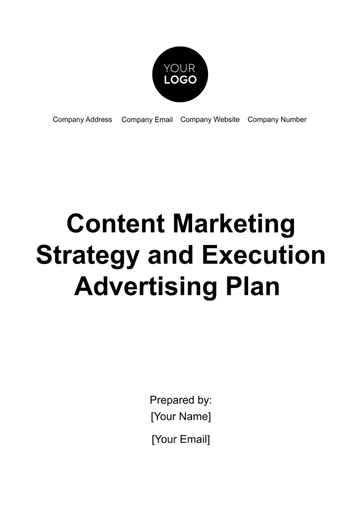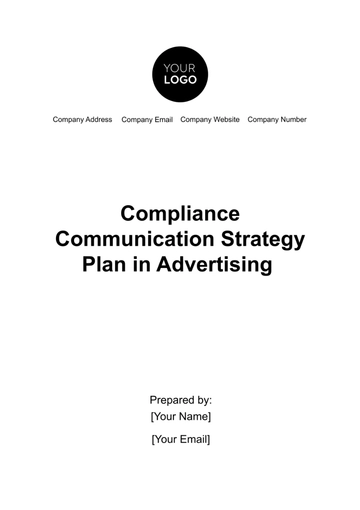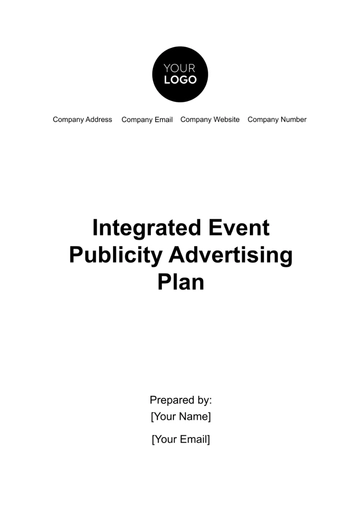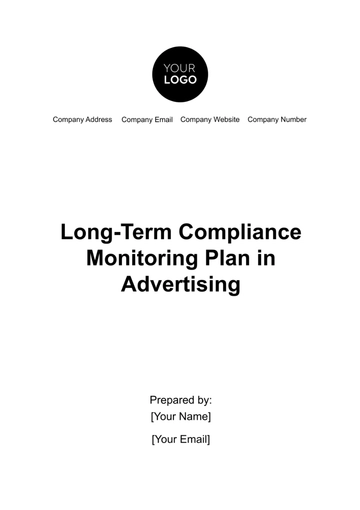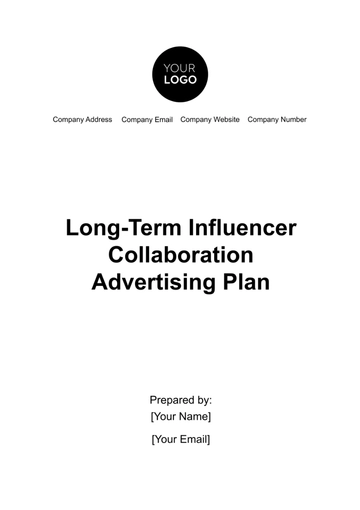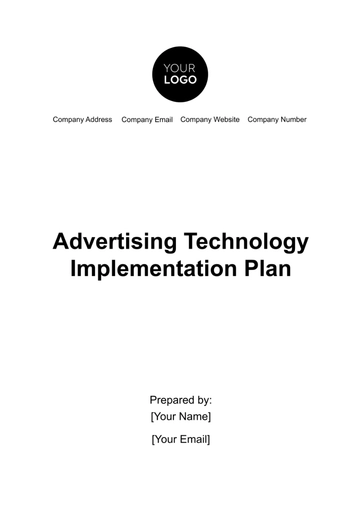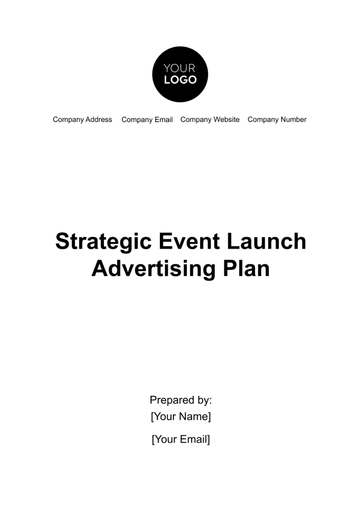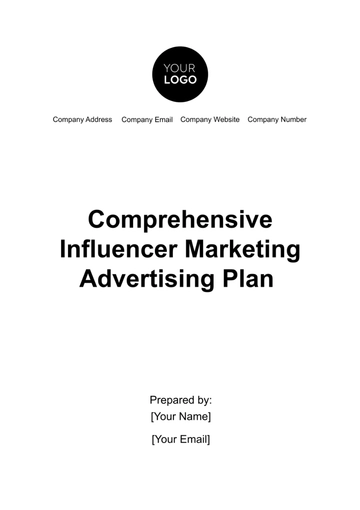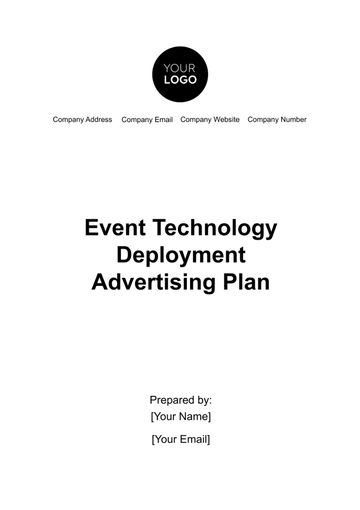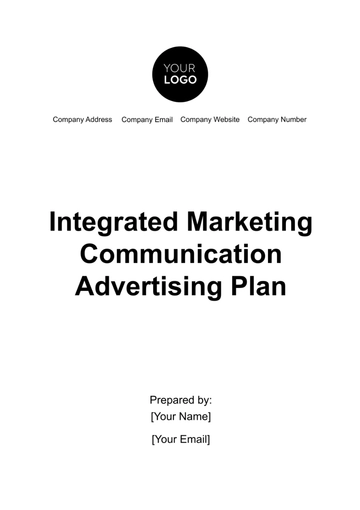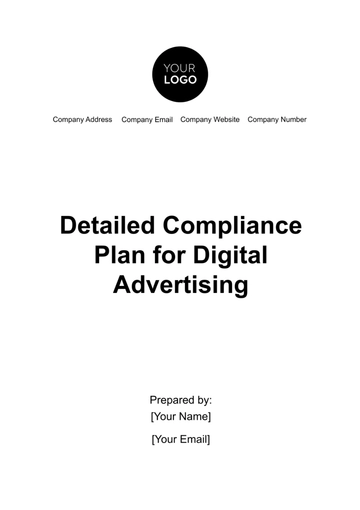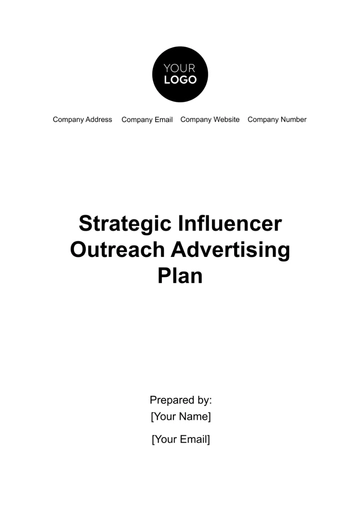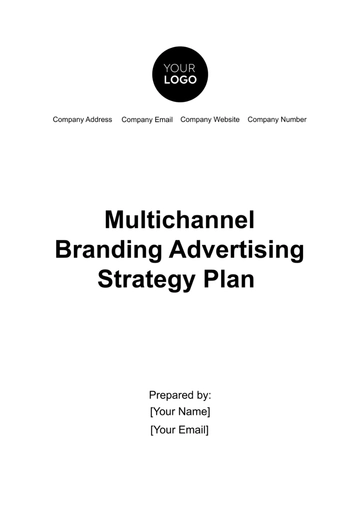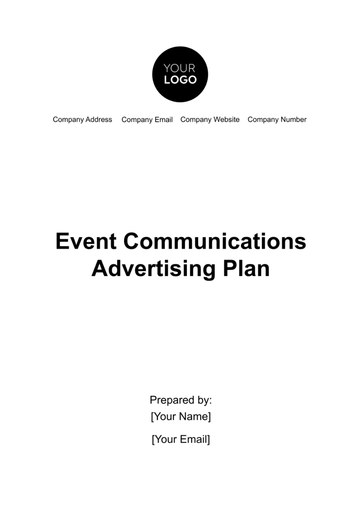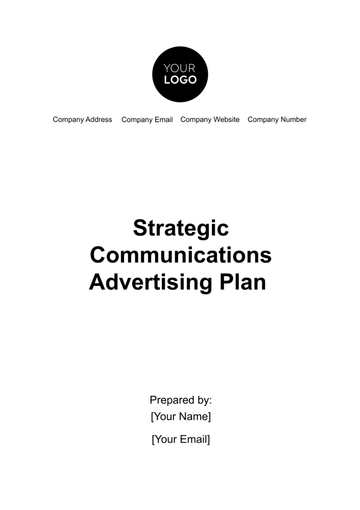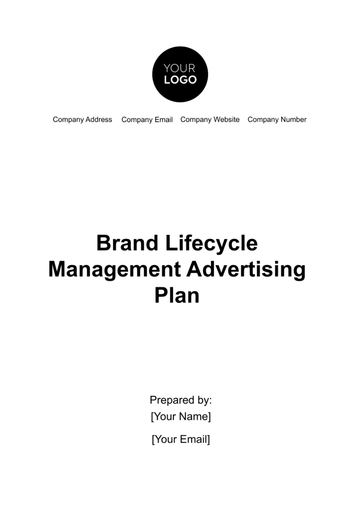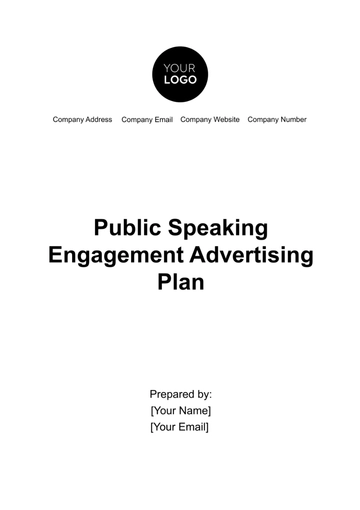Free Multichannel Branding Advertising Strategy Plan
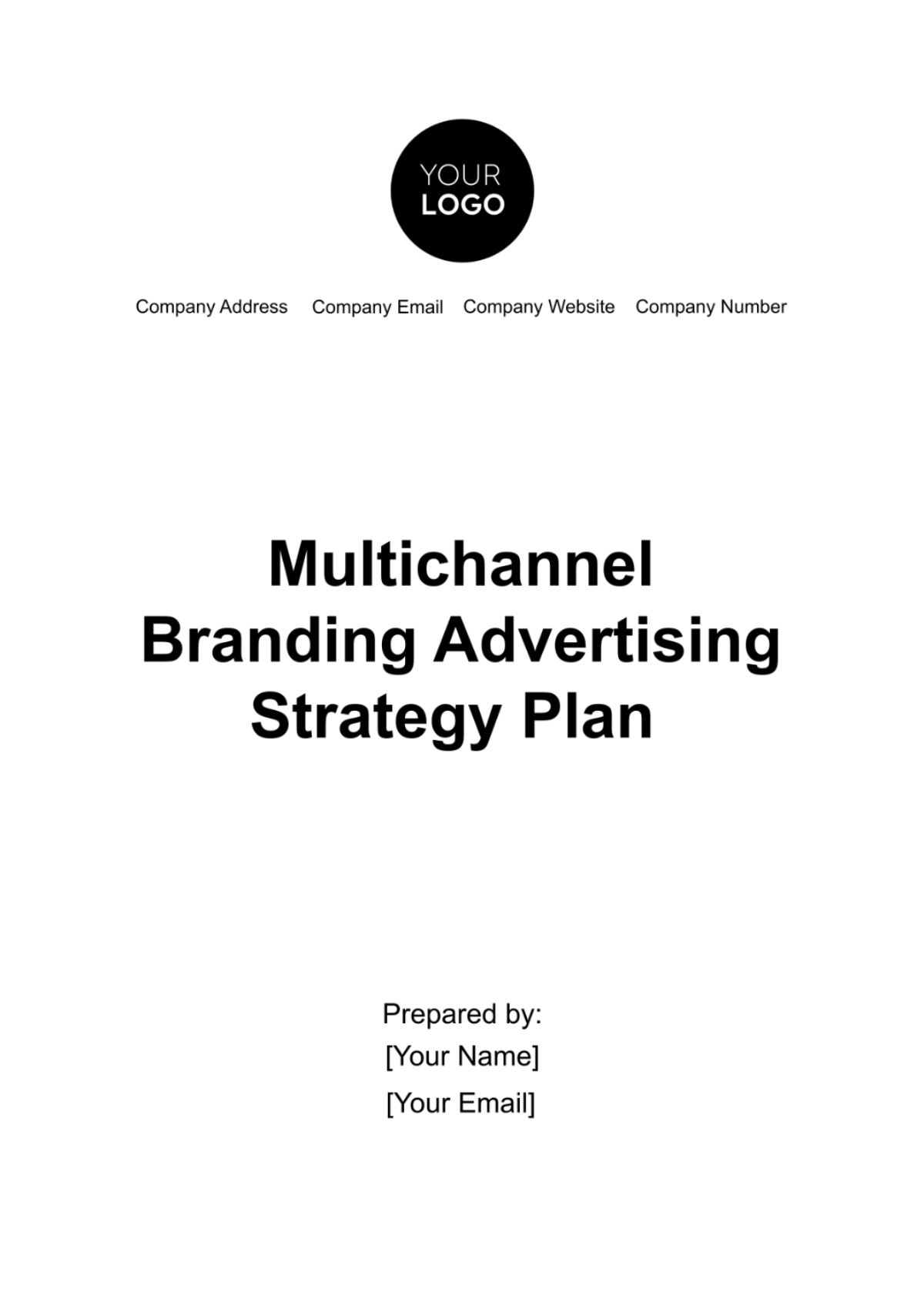
Strategy Plan
Executive Summary
In this Multi-Channel Branding Advertising Strategy Plan, we outline a comprehensive approach to elevate [Your Company Name]'s brand presence across various channels. The objective is to create a cohesive and impactful strategy that aligns with our business goals, resonates with our target audience, and reinforces our brand identity.
Situation Analysis
This Situation Analysis forms the cornerstone of [Your Company Name]'s Multichannel Branding Strategy. It includes a precise SWOT Analysis, identifying our strategic position, and a Market Analysis that discerns the evolving dynamics within [Your Industry]. This foundational assessment is crucial for aligning our strategic direction with market realities.
SWOT Analysis
1. Strengths:
A. Well-Established Brand Recognition: [Your Company Name] has cultivated a loyal customer base, leveraging its well-known brand identity.
B. Diverse Product/Service Portfolio: The company offers a strong range of products/services, ensuring broad market appeal and customer retention.
C. Solid Financial Foundation: [Your Company Name] maintains a robust financial position, facilitating strategic investments and growth initiatives.
2. Weaknesses:
A. Digital Platform Engagement: Currently, there's a limited presence on emerging digital platforms, which is critical in today's technology-driven market.
B. Brand Messaging Consistency: There's a need for more cohesive and consistent brand messaging across various channels to reinforce brand identity and values.
3. Opportunities:
A. Market Expansion: There is a growing market demand in the advertising industry, presenting a significant opportunity for expansion.
B. Online Market Penetration: Exploring untapped potential in online channels can yield significant returns and broaden customer outreach.
C. Strategic Co-Marketing Partnerships: Collaborative partnerships offer opportunities for co-marketing, enhancing brand visibility and market penetration.
4. Threats:
A. Competitive Market: The industry is marked by intense competition, necessitating innovative strategies to maintain market relevance.
B. Changing Consumer Preferences: There's a continuous shift in consumer preferences, which requires adaptive marketing strategies.
C. Fluctuations: Prevailing economic uncertainties could impact market stability and consumer spending patterns.
Market Analysis:
The industry is undergoing rapid evolution, predominantly towards digital engagement. A thorough analysis of competitors underscores the potential for [Your Company Name] to establish a unique market position. This can be achieved through innovative, strategic branding and targeted advertising initiatives, aimed at capturing and engaging the modern, digitally-oriented consumer base.
Objectives
As we advance in shaping the strategic direction for [Your Company Name], it is critical to articulate clear and measurable objectives. These objectives are designed to guide our actions and measure our progress. They encompass key areas such as Brand Awareness, Customer Engagement, and Lead Conversion, each tailored to reinforce our market position and drive business growth. By setting specific, quantifiable goals, we lay the groundwork for focused and effective strategy execution.
Brand Awareness: Implement a multifaceted marketing campaign, utilizing both traditional and digital channels, to increase visibility and recognition of our brand. This will include targeted advertising, content marketing, and public relations initiatives, all designed to resonate with our intended audience.
Customer Engagement: Develop and deploy an interactive content strategy, leveraging social media, blogs, and email marketing. This strategy will focus on engaging content that encourages audience participation and sharing, thereby fostering a more active and involved community around our brand.Lead Conversion: Utilize data-driven insights to refine our targeting approach, ensuring that our marketing efforts are reaching the most receptive segments. We will optimize our sales funnels across all channels and employ A/B testing to continually improve our conversion tactics.
Each of these objectives is designed to work in concert, forming a cohesive strategy that strengthens [Your Company Name]'s market position, enhances customer relationships, and drives sustainable business growth.
Target Audience
Understanding and defining our target audience is crucial for the success of our branding and marketing efforts.
Demographic Profile: Our primary target audience comprises individuals within the [24-35] age bracket. This group is characterized by income level, education, occupation. Their lifestyle, values, and purchasing behavior align closely with the positioning of our brand.
Psychographic Elements: Beyond demographics, our audience exhibits specific psychographic traits. They tend to value quality, innovation, sustainability, which aligns with our brand ethos.
Behavioral Insights: Our audience's purchasing behavior is influenced by factors such as online reviews, social media trends, peer recommendations. They are active on various social media channels.
Challenges and Pain Points: Understanding the challenges and pain points of our audience is vital. Our strategy aims to address these through targeted messaging and solutions that resonate with their needs.
Media Consumption Habits: Our target audience predominantly consumes media through social media platforms, online forums, and TV channels. This insight will guide our media planning and content strategy, ensuring we are present where our audience is most active.
Engagement Preferences: This group prefers interactive content, educational materials, and promotional offers. Tailoring our engagement strategy to these preferences will increase the effectiveness of our campaigns.
Our strategy will be informed by a deep understanding of our target audience, ensuring that every aspect of our branding and marketing is designed to resonate with their unique preferences and behaviors.
Channel Selection
In order to effectively reach and engage with our target audience, [Your Company Name] has strategically selected a mix of traditional and digital channels for our advertising campaigns. Each channel has been chosen based on its ability to deliver our message to the right audience in the most impactful way.
1. Traditional Channels:
A. Television (TV): TV remains a powerful medium for reaching a wide audience with dynamic visual content. We will select time slots based on the viewership patterns of our target demographic to maximize impact and relevance.
B. Radio: Radio advertising will be used to deliver engaging audio content, reinforcing brand messaging. We will carefully select radio stations that align with our audience's listening preferences, ensuring optimal exposure.
C. Print: Print media, including newspapers and magazines, will be used to target specific demographics, enhancing brand visibility and credibility. We will place advertisements in publications that have a proven track record of resonating with our audience, ensuring effective reach.
Digital Channels:
Social Media: These platforms are ideal for engaging with our audience through visually appealing content, interactive posts, and community building. We will employ targeted advertising, leveraging user demographics and behaviors to ensure our content reaches the most receptive audience.
Email Marketing: Email marketing will be utilized to nurture leads and maintain ongoing brand engagement. We will segment our email lists to deliver tailored content, fostering a more personalized connection with our audience.
Google Ads: Google's advertising platform will be leveraged for targeted online visibility and reach. We will use strategic keyword selection and ad placements to optimize our reach and engagement with potential customers.
Each channel has been chosen not only for its reach but also for its ability to connect with our audience in a meaningful way. This multi-channel approach will ensure a cohesive and comprehensive reach, engaging our audience at various touchpoints and through diverse mediums.
Brand Messaging and Positioning
Our brand messaging centers around [Your Company Name]'s unwavering commitment to [key value proposition]. Emphasizing [unique selling points] will distinguish us in the market. This messaging will be consistently integrated across all channels, reinforcing our unique position and resonating with the emotional and functional needs of our audience.
Creative Development
The creative aspects of our branding strategy are crucial in defining and communicating the essence of [Your Company Name]. Our approach involves a meticulous crafting of creative elements, ensuring that each piece resonates with our audience while staying true to our brand identity.
Visual Content:
High-Quality Imagery and Videos: We will produce and use top-tier visual content that aligns seamlessly with our brand aesthetics. This includes professional photography and videography that captures the essence of our brand.
Brand Consistency: All visual creatives will consistently incorporate our brand colors, fonts, and design elements. This consistency is key in building brand recognition and recall across all platforms and touchpoints.
Copywriting:
Engaging and Concise Copy: Our copy will be crafted to communicate key messages in a clear and compelling manner. The focus will be on creating content that engages the audience while conveying our brand's values and propositions succinctly.
Channel-Specific Tailoring: We recognize that each advertising channel has its unique tone and style. Therefore, our content will be customized for each platform, ensuring it resonates with the audience specific to that channel.
Collaborative Process:
Teamwork and Feedback: A collaborative approach will be central to our creative process. Regular interactions and feedback sessions with our creative team will ensure that all elements are aligned with our strategic objectives.
Continuous Refinement: We will establish a process for continual review and refinement of our creative elements. This approach allows us to adapt and evolve our creatives based on audience feedback and emerging trends.
Our creative development process is designed to produce high-impact, brand-aligned content that engages and resonates with our target audience. Through a combination of quality visuals, effective copywriting, and a collaborative creative process, we will ensure that every creative output exemplifies the essence and values of [Your Company Name].
Integrated Campaigns
Our strategy for integrated campaigns is designed to create a unified and impactful brand experience across all channels. These campaigns will seamlessly weave together different media, ensuring that each element complements and amplifies the others.
Cross-Channel Teasers:
Pre-Launch Excitement: We will deploy teasers on various social media platforms to build anticipation for our upcoming television and radio campaigns. This strategy aims to create a buzz and engage our audience before the main campaign launch.
Thematic Consistency: Across all teasers, we will maintain consistent thematic elements and narratives. This consistency ensures that the campaign is cohesive and memorable, regardless of the platform.
Digital-Physical Integration:
QR Code Integration: Print advertisements will feature QR codes that link directly to online content or digital experiences. This integration provides a smooth transition from physical to digital mediums, enhancing user engagement.
Geo-Targeted Digital Ads: We will use geo-targeting for our digital advertisements to complement the physical locations where our print materials are distributed. This strategy will ensure that our digital efforts are highly relevant and localized, increasing their effectiveness.
User-Generated Content (UGC):
UGC Campaigns: We will encourage the creation of User-Generated Content through interactive social media campaigns. These campaigns will focus on incorporating user stories, experiences, and testimonials, directly involving our audience in the brand narrative.
UGC Showcasing: Selected UGC will be featured in our television and print campaigns, lending an element of authenticity and relatability to our brand messaging. This approach not only engages our audience but also leverages their content to enhance the credibility and appeal of our brand.
Through these integrated campaigns, [Your Company Name] aims to create a multi-dimensional brand experience that resonates with our audience across all touchpoints. The synergy of cross-channel teasers, digital-physical integration, and user-generated content will serve to amplify our brand message, fostering a deeper connection with our target audience.
Budget Allocation
With a total advertising budget of [$50,000], [Your Company Name] is committed to a strategic allocation that maximizes both reach and impact, while embodying our core values of innovation, efficiency, and targeted impact.
Channel | Allocation |
Traditional Channels | 45% |
Digital Channels | |
Testing and Experimentation |
The budget allocation is strategically divided across traditional and digital channels, with a segment dedicated to testing and experimentation.
Traditional Channels: Comprising [45%] of the budget, this segment is focused on reaching audiences through established mediums like TV, radio, and print, each tailored to maximize audience engagement and brand visibility.
Digital Channels: Allocated [40%] of the budget, this sector targets the digital-savvy audience. It includes social media for interactive and visually engaging content, email marketing for personalized communication, and Google Ads for targeted online reach.
Testing and Experimentation: This innovative segment, receiving [15%] of the budget, is set aside for exploring new marketing frontiers and leveraging advanced data analytics tools. It's a testament to [Your Company Name]'s commitment to staying ahead in a rapidly evolving digital landscape.
Each allocation reflects a strategic investment, marrying efficiency with effectiveness, to ensure that [Your Company Name] not only reaches its target audience but also resonates with them across various touchpoints.
Conclusion
This Strategy Plan for [Your Company Name] represents a comprehensive and dynamic approach to establishing a robust market presence. By aligning our objectives, audience insights, creative development, channel selection, and budget allocation, we have laid out a blueprint that not only addresses current market demands but also anticipates future trends. This plan underscores our commitment to innovation, audience engagement, and strategic growth.
- 100% Customizable, free editor
- Access 1 Million+ Templates, photo’s & graphics
- Download or share as a template
- Click and replace photos, graphics, text, backgrounds
- Resize, crop, AI write & more
- Access advanced editor
Elevate your brand with the Multichannel Branding Advertising Strategy Plan Template from Template.net. This dynamic tool enables you to craft comprehensive strategies across various channels. With its editable and customizable features, tailor the plan to suit your brand's unique needs. Utilize the Ai Editor Tool for seamless editing and optimization of your advertising strategy.
You may also like
- Finance Plan
- Construction Plan
- Sales Plan
- Development Plan
- Career Plan
- Budget Plan
- HR Plan
- Education Plan
- Transition Plan
- Work Plan
- Training Plan
- Communication Plan
- Operation Plan
- Health And Safety Plan
- Strategy Plan
- Professional Development Plan
- Advertising Plan
- Risk Management Plan
- Restaurant Plan
- School Plan
- Nursing Home Patient Care Plan
- Nursing Care Plan
- Plan Event
- Startup Plan
- Social Media Plan
- Staffing Plan
- Annual Plan
- Content Plan
- Payment Plan
- Implementation Plan
- Hotel Plan
- Workout Plan
- Accounting Plan
- Campaign Plan
- Essay Plan
- 30 60 90 Day Plan
- Research Plan
- Recruitment Plan
- 90 Day Plan
- Quarterly Plan
- Emergency Plan
- 5 Year Plan
- Gym Plan
- Personal Plan
- IT and Software Plan
- Treatment Plan
- Real Estate Plan
- Law Firm Plan
- Healthcare Plan
- Improvement Plan
- Media Plan
- 5 Year Business Plan
- Learning Plan
- Marketing Campaign Plan
- Travel Agency Plan
- Cleaning Services Plan
- Interior Design Plan
- Performance Plan
- PR Plan
- Birth Plan
- Life Plan
- SEO Plan
- Disaster Recovery Plan
- Continuity Plan
- Launch Plan
- Legal Plan
- Behavior Plan
- Performance Improvement Plan
- Salon Plan
- Security Plan
- Security Management Plan
- Employee Development Plan
- Quality Plan
- Service Improvement Plan
- Growth Plan
- Incident Response Plan
- Basketball Plan
- Emergency Action Plan
- Product Launch Plan
- Spa Plan
- Employee Training Plan
- Data Analysis Plan
- Employee Action Plan
- Territory Plan
- Audit Plan
- Classroom Plan
- Activity Plan
- Parenting Plan
- Care Plan
- Project Execution Plan
- Exercise Plan
- Internship Plan
- Software Development Plan
- Continuous Improvement Plan
- Leave Plan
- 90 Day Sales Plan
- Advertising Agency Plan
- Employee Transition Plan
- Smart Action Plan
- Workplace Safety Plan
- Behavior Change Plan
- Contingency Plan
- Continuity of Operations Plan
- Health Plan
- Quality Control Plan
- Self Plan
- Sports Development Plan
- Change Management Plan
- Ecommerce Plan
- Personal Financial Plan
- Process Improvement Plan
- 30-60-90 Day Sales Plan
- Crisis Management Plan
- Engagement Plan
- Execution Plan
- Pandemic Plan
- Quality Assurance Plan
- Service Continuity Plan
- Agile Project Plan
- Fundraising Plan
- Job Transition Plan
- Asset Maintenance Plan
- Maintenance Plan
- Software Test Plan
- Staff Training and Development Plan
- 3 Year Plan
- Brand Activation Plan
- Release Plan
- Resource Plan
- Risk Mitigation Plan
- Teacher Plan
- 30 60 90 Day Plan for New Manager
- Food Safety Plan
- Food Truck Plan
- Hiring Plan
- Quality Management Plan
- Wellness Plan
- Behavior Intervention Plan
- Bonus Plan
- Investment Plan
- Maternity Leave Plan
- Pandemic Response Plan
- Succession Planning
- Coaching Plan
- Configuration Management Plan
- Remote Work Plan
- Self Care Plan
- Teaching Plan
- 100-Day Plan
- HACCP Plan
- Student Plan
- Sustainability Plan
- 30 60 90 Day Plan for Interview
- Access Plan
- Site Specific Safety Plan

